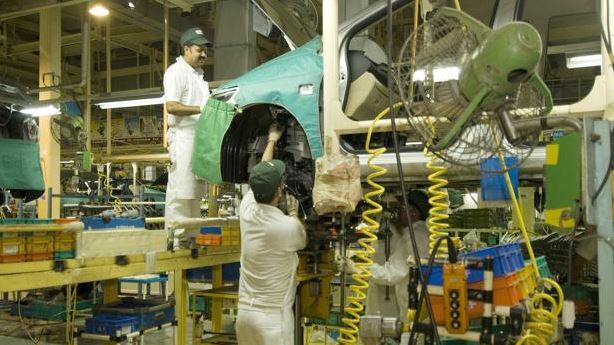Initial high-frequency indicators for December 2019 suggest some sort of revival in the Indian economy. The Nikkei Manufacturing Purchasing Managers’ Index. Also, compiled by IHS Markit has increased to 52.7 in December 2019, the highest since May 2019. Goods and Services Tax (GST) collections were above Rs 1 lakh crore for the second consecutive month in December. Auto companies such as Maruti Suzuki have reported a rise in domestic car sales.
Centre for Monitoring Indian Economy’s (CMIE) Capex database shows that new investment announcements have posted positive growth in the December quarter, the first since June 2018. Are these signs that the Indian economy will finally break from six-quarter growth deceleration in the December quarter?
The RBI’s Monetary Policy Committee (MPC) in its December meeting had expected GDP growth to start a recovery in the second half of the current fiscal year. The MPC had projected GDP growth in the second half to be in the range of 4.9%-5.5% against 4.8% between April and September last year. It is better to wait for some more time before concluding that the worst is over the Indian economy.
Initial high-frequency indicators for December 2019 suggest some sort of revival in the Indian economy
While the manufacturing PMI has increased for the third consecutive month. Also, it’ll be interesting to see whether the services PMI also shows this trend. A PMI value greater than 50 signifies expansion in economic activity in these sectors. Both these indices were greater than 50 in November 2019. Also, while the manufacturing PMI has not gone below 50 since July 2017. However, the month when GST was rolled out.
Yet, the manufacturing component of the Index of Industrial Production (IIP) has shown negative growth for three consecutive months up to October 2019, the latest period for which data is available. Even in November 2019, core sector index, which comprises of coal, crude oil, natural gas, refinery products, fertilizers, steel, cement, and electricity, contracted for the fourth consecutive month.
These two indices suggest that a revival in the industry component of GDP is either unlikely or would be extremely muted in the December quarter. However, the process might have begun, as shown by the consecutive rise in manufacturing PMI. A higher service PMI, however, could lead to some job-creation and hence a rise in disposable incomes in the economy.




